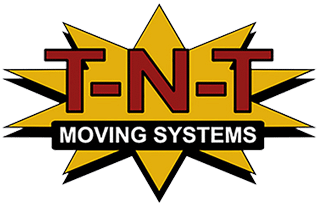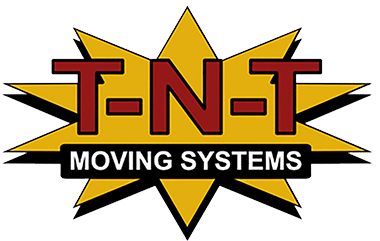How to Plan for Winter in a New Home
Is this your first winter in a new home? The holidays are fast approaching and you’re thinking about where to put the tree, how many you can have to dinner at Christmas or New Year’s, and where’s the best place to hide the gifts from the kids, and your spouse. Great! You should think about those things, for that’s the joy of the winter holidays.
But have you thought about what it means to be a home owner in winter, especially if you’ve just moved into a new home? Perhaps you have moved from an area that has milder winters than where you now live, and you’ve yet to see what a brisk winter can be like. Perhaps you’ve moved from an apartment into your first home (congratulations!) and don’t even know what things there are to consider for winter home ownership. Or perhaps you are a veteran home owner and a little refresher could help.
Here at TNT Moving Systems, we have you covered! We’ve got some tips for things we think a homeowner should look into this winter as well as resources if you need assistance. See it as a sort of “checklist” for ensuring your home is ready to brave the coming short days and long nights of winter.
Cold Spots
Do you need to call in a professional, who will bring in infrared and thermal imaging equipment to scan your home for all the places where your home is losing heat? No, not anymore!
Thermal cameras for consumers are more affordable now. One example is the Seek, which starts at $249. A free app connects with the camera and turns your smartphone or tablet into a heat meter reader.
 Thermal imaging will help you locate heat leaks in your walls and roofing. Once you’ve mapped your home, take action to repair things yourself and save money to spend on bigger jobs for which you need a builder or contractor. The camera data will equip you to negotiate repair costs. Being in the know means you can save money for big jobs.
Thermal imaging will help you locate heat leaks in your walls and roofing. Once you’ve mapped your home, take action to repair things yourself and save money to spend on bigger jobs for which you need a builder or contractor. The camera data will equip you to negotiate repair costs. Being in the know means you can save money for big jobs.
Pipes
Going away for an extended period and concerned about your pipes bursting? If you’re really serious about it, call a plumber to drain the pipes and blow out any lingering water with pressurized air and even add in an anti-freeze type substance. If you just want to take the basic precautions, turn off the water at the main to the house, open all the faucets, and flush all the toilets to get rid of any water reserved in the lines. Make sure you check outside faucets and disconnect any hoses or garden equipment. You also may want to insulate any pipes that are exposed.
Windows
And for the winterizing the windows, here are few simple suggestions. First, check the caulking around all the parts of the window and refresh it, if needed. Second, consider buying winterizing insulation kits from a hardware store. These can be useful for any drafty windows or for rooms you don’t use. They can also just add another layer of protection, to prevent heat leakage.
Two other things to do, for windows and doors, include installing door sweeps on bottom of all exterior doors. Seal the gaps between the window or door and its jambs with weather stripping. Also, you can consider using adhesive-backed soft foam weather stripping for windows, which conform to fill the gaps.
Lastly, don’t forget you can use temporary caulking to seal off windows that you don’t intend to open until spring. Press into place and then peel off in spring. This can be a great money-saver!
Power Outages
Plan ahead for power outages. Locate your warm blankets and clothing from socks to hats, find the flashlights and make sure the batteries are good, and charge up the various devices (including your phone!) not just for entertainment but for information. Although with all the convenience and technology of today, it’s easy to forget about how useful older technology can be — like a battery powered radio for music and news, candles that aren’t just decorative, and a manual can opener. Never, ever try to cook on the grill (whether its gas or charcoal) inside the house! Kerosene heaters are dangerous too for their fire hazard and fumes. Make sure that you have the phone number for the power company written down, and, if you have very young or elderly people at home, learn the locations you can get to for heat such as a local church, police station, or emergency shelter.
Kerosene Heaters
Kerosene heaters are great to keep on-hand if you face a power outage, supplying temporary heat. But be sure never to set them too close to anything flammable (clothing, blankers, furniture, etc) and be certain that the area you use them in is well-ventilated because they can produce dangerously high amounts of soot and carbon monoxide. Failure to follow safety precautions could result in asphyxiation or carbon monoxide poisoning.
Oil Heat
Oil heaters are much less common these days. Appreciated for their cozy warmth but a mystery to many, oil heaters can result in a whopping expense all at once if you don’t stay on top of your fuel needs. Schedule your oil delivery at a time when the crew can show you how to measure how much oil is in the tank. Make sure to have the chimney swept to avoid fire hazards. Connect with a plumber about the system inside your home including the boiler, how to blow it down, what sounds are normal and which ones are not, and tips on what not to do. Every system is a bit different, and the older it is, the more “personality” it has.
Adjusting the Hot Water Heater
You want to be sure that your water heat is at the best temperature for you and your family, so that you’re not scalded in the shower nor left shivering from the lack of hot enough water. Many water heater manufacturers suggest a setting of 120 degrees. Temperatures over 120 degrees are considered a hazard. Children and elderly persons have more sensitive skin that the average adult and will burn more easily in hot water. Tap water scald burns account can account for nearly 20 percent of all childhood scald burns that require hospitalization — almost half of which were caused by small children turning on the water themselves.
Test the water temperature before you make adjustments. You can use a cooking thermometer to get a read of the hot water to see if what you’ve set the temperature to be is what is coming out of the faucet. Note that it will take several hours for the water temperature to adjust after changing settings.
With gas water heaters, merely adjust the dial up or down to suit your needs. Turning it counterclockwise will raise the temperature and clockwise will lower it.
To adjust an electrical heater, shut off the power to the water heater, remove the access panel from the unit’s side and pull aside (or out) the insulation covering the thermostat. Use a flat-blade screwdriver to raise or lower the temperature, then return the insulation and reattach the side panel. Now turn the power to the heater back on.
Remember that hotter water will mean higher energy costs.
Landscaping
In winter, when your trees or shrubbery have gone dormant, get ready to trim! With the leaves gone, you can really see the shape of the woody growth you need to trim back whether its just for shaping up the landscaping or making sure that overgrowth isn’t creating a shady spot on the sidewalk that will turn icy, snow-covered branches won’t bend and block a door, and brittle trees have the least chance to break and damage gutters or windows. If there are limbs or branches that reach over power lines, contact the power company to trim them (though be warned you may not like their utilitarian approach). While you’re out in the yard, you may consider how hospitable an environment it is for animals like birds and squirrels.
Well Water and Septic Systems
If you have well water at your new home, be sure to have it inspected by a qualified company regularly, perhaps every year or two. An inspection can run from $150-250 on average.
The company will open up your well and test for the static water level in the well, as well as take samples of the water to send to a lab. The lab will test for heavy metals and coliform bacteria, among other things. The inspector should also check the copy of the original well permit and test the GPM (gallon per minute) flow. The GPM can change over time, either increasing or decreasing, so be sure to have the inspector confirm the most current GMP flow rate by pumping the well dry. Have the inspector also check the pressure tank in or under the house, which creates your water pressure.
Septic systems also need to be inspected, so check for the last time it was inspected. It’s important to get on a regular inspection cycle. Inspections can run about $500+/- (which includes the tank being pumped out), but realize that money is well-spent: you never want sewage to back up into the house’s pipes or seep from the buried tank and into the leech field. The inspector can pump out the tank and then check for any leakages or fractures in the tank itself.
When possible, have the well and septic systems checked before winter, when the ground freezes. Or, if you have to wait, schedule for the first of spring, after a good thaw, so that you are ready for the following winter.
Snow Shoveling
Injuries as a result of snow shoveling are surprisingly common. Snow, particularly wet snow, can weigh a lot. Ice can hide underneath it. And all too often, a good guy suffers a big heart attack when he’s out there clearing the walk and the cardio exercise is more than he thought it would be. Take precautions! Salt your walkways and driveway before the snow even starts to fall. An initial layer of show will melt upon direct contact with the salt. You can mix the salt with sand to create some traction for walking and driving. (Remember salt and chemical snowmelt products can harm plants and animals, so be mindful with your application.)
When preparing to shovel, warm up first — literally. Stretch out before you bundle up and wear your gear for long enough to build up some warmth before heading outside. It’s better to shovel less snow a couple of times than wait to dig out from under it all! Push snow, don’t lift it (that’s how most back injuries happen). Take breaks. Stay hydrated. Watch out for hypothermia. And tell someone when you’re going out to shovel so that they notice if you don’t come back.
Want some more winter weather resources? Check out these:
The Low Income Energy Assistance Program (LIEAP) is a Federally-funded program that provides for a one-time vendor payment to help eligible households pay their heating bills. Households including a person aged 60 or older, or an individual receiving disability benefits and services through the N.C. Division of Aging and Adult Services, are eligible to sign up for assistance from Dec. 1 – 31. All other households may apply from Jan. 1 – March 31, or until funds are exhausted.
Mecklenburg Emergency Assistance Program
Emergency, Community, and Energy Services offers aid through churches and community agency referrals to residents who are facing a hardship*. Residents who receive these services are typically facing a shortage in food and medicine and/or financial crisis dealing with heating/cooling cost.
NC 2-1-1 is an information and referral service provided by United Way of North Carolina. The service refer callers to organizations in their local community best equipped to address their specific health and human services needs including food, shelter, energy assistance, housing, parenting resources, healthcare, substance abuse, as well as specific resources for older adults and for persons with disabilities, and much more.
Duke Energy Customer Assistance Programs
From the Carolinas to Kentucky, Indiana, Florida, and Ohio, programs like Share the Warmth help cover heating and cooling costs for those in need. Make use of the programs or choose to support them when you pay your bill.
Cold Weather Safety for Older Adults
Learn some of the subtle and not-so-subtle ways cold weather can impact your health and what to do in case of emergency.
Snow Day Activities for the Whole Family
Reader’s Digest shares a few ideas for keeping boredom at bay.
Managing Backyards and Other Urban Habitats for Birds
Urban landscapes comprise an increasing percentage of potential wildlife habitat. With proper management and hard work, these areas provide valuable space for many wildlife species, especially birds and even in winter.





